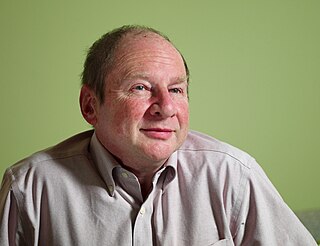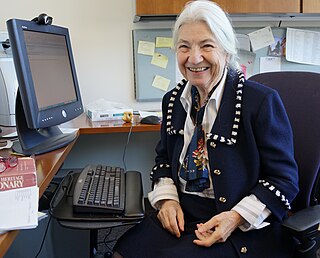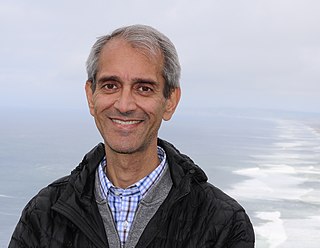Related Research Articles

Harold Abelson is the Class of 1922 Professor of Computer Science and Engineering in the Department of Electrical Engineering and Computer Science at the Massachusetts Institute of Technology (MIT), a founding director of both Creative Commons and the Free Software Foundation, creator of the MIT App Inventor platform, and co-author of the widely-used textbook The Structure and Interpretation of Computer Programs, sometimes also referred to as "the wizard book."

Eta Kappa Nu (ΗΚΝ) or IEEE-HKN is the international honor society of the Institute of Electrical and Electronics Engineers (IEEE). Joining HKN is by invitation only. Membership is a lifelong designation for individuals who have distinguished themselves as students or as professionals in electrical engineering, computer engineering, computer science, and other fields of IEEE interest.

Symbol Technologies is an American manufacturer and supplier of mobile data capture and delivery equipment. The company specializes in barcode scanners, mobile computers, RFID systems and Wireless LAN infrastructure. In 2014, Symbol Technologies became a subsidiary of Zebra Technologies, and is headquartered in Holtsville, New York, on Long Island.
John Yen is Professor of Data Science and Professor-in-Charge of Data Science in the College of Information Sciences and Technology at Pennsylvania State University. He currently leads the Laboratory of AI for Cyber Security at Penn State. He was the founder and a former Director of the Cancer Informatics Initiative there.
Roland Walter Schmitt was an American physicist, business executive and the sixteenth president of Rensselaer Polytechnic Institute.
David B. Fogel is a pioneer in evolutionary computation.

Ruzena Bajcsy is an American engineer and computer scientist who specializes in robotics. She is professor of electrical engineering and computer science at the University of California, Berkeley, where she is also director emerita of CITRIS.
Sung-Mo “Steve” Kang is an electrical engineering scientist, professor, author, inventor, entrepreneur and 15th president of KAIST. Kang was appointed as the second chancellor of the University of California, Merced in 2007. He was the first department head of foreign origin at the electrical and computer engineering department at the University of Illinois at Urbana-Champaign. Dr. Kang teaches and has written extensively in the field of computer-aided design for electronic circuits and systems; he is recognized and respected worldwide for his outstanding research contributions. Dr. Kang has led the development of the world’s first 32-bit microprocessor chips as a technical supervisor at AT&T Bell Laboratories and designed satellite-based private communication networks as a member of technical staff. Dr. Kang holds 15 U.S. patents and has won numerous awards for his ground breaking achievements in the field of electrical engineering.
Ernst Weber, Austria-born American electrical engineer, was a pioneer in microwave technologies and played an important role in the history of the New York University Tandon School of Engineering, where in 1945 he founded the Microwave Research Institute. Weber was also the first president of the Institute of Electrical and Electronics Engineers (IEEE) and one of the founders of the U.S. National Academy of Engineering (NAE).

Pietro Perona is an Italian-American educator and computer scientist. He is the Allan E. Puckett Professor of Electrical Engineering and Computation and Neural Systems at the California Institute of Technology and director of the National Science Foundation Engineering Research Center in Neuromorphic Systems Engineering. He is known for his research in computer vision and is the director of the Caltech Computational Vision Group.

Fei-Fei Li is a Chinese-American computer scientist who is known for establishing ImageNet, the dataset that enabled rapid advances in computer vision in the 2010s.
Eero Simoncelli is an American computational neuroscientist and Silver Professor at New York University. He was a Howard Hughes Medical Institute Investigator from 2000 to 2020. In 2020, he became the inaugural director of the Center for Computational Neuroscience at the Flatiron Institute of the Simons Foundation.

Andrea Goldsmith is an American electrical engineer and the Dean of Engineering and Applied Science at Princeton University. She is also the Arthur LeGrand Doty Professor of Electrical Engineering at Princeton. She was previously the Stephen Harris Professor in the School of Engineering at Stanford University, as well as a faculty affiliate at the Stanford Neurosciences Institute. Her interests are in the design, analysis and fundamental performance limits of wireless systems and networks, and in the application of communication theory and signal processing to neuroscience. She also co-founded and served as chief technology officer of Plume WiFi and Quantenna Communications. Since 2021, she has been a member of the President’s Council of Advisors on Science and Technology (PCAST).

Krishna V. Shenoy (1968-2023) was an American neuroscientist and neuroengineer at Stanford University. Shenoy focused on motor and computational neuroscience, neuroengineering, brain-computer interfaces (BCIs) and neurotechnology. Throughout his lifetime, he published over 140 journal articles. On 21 January 2023, he died after a long battle with pancreatic cancer.
Surya Ganguli is a University Professor at Stanford University and a Visiting Research Professor at Google. Dr. Ganguli is primarily known for his work on neural networks and deep learning, although he has also published papers on theoretical physics. He presently runs the Neural Dynamics and Computation Lab at Stanford, where he aims to reverse engineer how networks of neurons and synapses cooperate across multiple scales of space and time to facilitate sensory perception, motor control, memory, and other cognitive functions. He is also known for being a prolific public speaker and lecturer, having been invited to give over 200 talks at various universities, institutes, workshops, conferences, and symposiums since 2005.
References
- ↑ Funding Universe history of Symbol Technologies
- ↑ http://www.theswartzfoundation.org/swartz-bio.asp Bio
- 1 2 Feder, Barnaby J. (8 July 2003). "Two Symbol Officials Quit Amid Fraud Investigations". New York Times. Retrieved 25 May 2014.
- ↑ "Symbol Technologies Agrees to Settle SEC Enforcement Action Charging the Company with Accounting Fraud". Securities and Exchange Commission. Retrieved 25 May 2014.
- ↑ "IEEE Ernst Weber Engineering Leadership Recognition Recipients" (PDF). IEEE. Retrieved November 20, 2010.